For decades, the Hawk trainer has been a mainstay of UK military aviation, enabling the Royal Air Force to groom future fighter pilots while delighting airshow audiences with the iconic Red Arrows.
But age and rising costs have turned the Hawk into a looming problem. The T1 model, which powers the Red Arrows, is on borrowed time, and the newer T2 is beset by maintenance and reliability issues. Unless a replacement is found quickly, the UK risks handing its world-famous aerobatic team an uncertain future—or even sending prospective fast-jet pilots abroad for training.
Enter AERALIS, a British aerospace startup with an audacious plan to replace the Hawk using a fresh model of aircraft development. The company’s proposal is bold: design and build a modular jet that adapts to multiple training roles without the Ministry of Defence footing the upfront bill. Investors, they say, will cover development costs in exchange for future flight-hour contracts.
It’s an approach that could preserve a sovereign training capability, keep the Red Arrows flying British jets, and generate thousands of UK jobs—with minimal financial risk for the government.
The Hawk Conundrum
Few aircraft hold the same place in British aviation culture as the Hawk. Its older T1 variant, introduced in the mid-1970s, has served the Red Arrows so well that many assume it will always be there, streaking red-white-and-blue plumes across the sky. Yet that assumption is now precarious.
While still maneuverable and visually striking, the T1’s maintenance costs have risen sharply, and critical parts are becoming harder to source. The T2—the RAF’s advanced trainer—is not far behind on the retirement schedule.
The UK must replace both, or risk an expensive gap that forces pilot training onto frontline Typhoons or even F-35s—an inefficient (and costly) use of advanced combat jets. Some training is already migrating overseas, raising concerns about the erosion of domestic expertise.
A Homegrown Option
Established in 2017, AERALIS aims to return fast-jet training to British soil with an innovative, modular aircraft concept. Instead of designing multiple jets for different roles—basic training, advanced training, aerobatic display—the company proposes a single fuselage adaptable via interchangeable wings, engines, and avionics. Proponents say this approach can halve the long-term operating cost of the fleet by consolidating maintenance, spares, and logistics under one common architecture.
Crucially, AERALIS suggests it could move swiftly if it receives formal recognition from the Ministry of Defence that its jets will fill the RAF’s future training needs. That nod of confidence could unlock the private investment needed to complete development.
In theory, the result is a “pay-as-you-go” model: the government pays for flight hours, while the aircraft itself is financed and owned by a third party. If successful, it would mark a departure from decades of cumbersome (and often over-budget) defence procurement practices.
Strategic Benefits
Supporters of the AERALIS approach argue that it does more than just solve a training deficit. They say it represents a chance to reignite British aerospace design and manufacturing, with the potential to sustain or create thousands of skilled jobs. Building a homegrown jet trainer—rather than importing from Italy, the United States, or elsewhere—would also showcase the UK’s engineering talent and preserve a measure of industrial sovereignty.
For the Red Arrows in particular, retaining a British-made jet carries weight well beyond the purely operational. The team is an enduring symbol of the nation’s aviation heritage. Flying a foreign jet, however capable, could be seen as a blow to UK aerospace prestige at a time when the country seeks to bolster its high-tech manufacturing base.
Moreover, AERALIS’s concept is intentionally export-friendly. By meeting civil certification standards, their jet could potentially serve multiple NATO and allied air forces, offering them a plug-and-play training solution that does not require large government outlays. If all goes to plan, the commercial appeal could generate significant export revenue, further justifying the initial government endorsement.
A Crowded Field
Of course, AERALIS is not the only option. Major aerospace players already offer well-known trainer aircraft:
- Leonardo M-346 (originally a joint project with a Russian design bureau in the 1990s) is proven but considered expensive to buy and maintain by some.
- Boeing T-7A Red Hawk promises next-generation capabilities but has experienced development delays and could prioritise U.S. Air Force deliveries before exporting.
- Turkish Aerospace Hurjet is a fresh entrant already flying, but prospective buyers might weigh geopolitical or industrial-participation concerns.
- KAI T-50 Golden Eagle from South Korea is supersonic and combat-ready but may be over-specified for training, with higher fuel burn and lifecycle costs.
- Pilatus PC-21 is a turboprop that reduces costs but lacks a pure jet’s performance for higher-end training.
Critics of a brand-new design warn that standing up a production line, proving flight readiness, and securing full certification can be time-consuming and expensive. AERALIS has yet to fly a prototype, and skeptics argue that the RAF cannot gamble on an unproven aircraft under tight timelines but what’s the alternative?
A Fork in the Road
The UK stands at a decision point. Selecting an off-the-shelf foreign trainer might look simpler, but it risks losing the Red Arrows’ domestic pedigree, adding to trade imbalances, and eroding the nation’s ability to build its own jets—especially when thousands of aerospace jobs could be on the line. On the other hand, committing to a British startup like AERALIS requires faith that a smaller enterprise, armed with digital design tools and industry partners, can outpace the typical pitfalls of aircraft development.
Time is short. With the Hawk T1’s retirement fast approaching, the MoD will likely need to act within the next few years—or face a scenario where the Red Arrows are grounded or forced to fly a jet that’s neither British nor cost-effective in the long run.
In many ways, the choice mirrors broader questions about the UK’s industrial future. Can the country afford to let yet another homegrown aviation project slip away in favor of an imported platform? Or will it seize the opportunity to nurture a new generation of British aerospace engineers, while preserving an iconic demonstration of national pride?
Yet AERALIS’s ambitious vision comes with hurdles that extend beyond tight timelines. The company has yet to fly a prototype, with its first flight—originally targeted for 2024—pushed beyond early 2025, raising doubts about its ability to meet the RAF’s pressing needs. While wind tunnel testing in 2022 marked progress and a preliminary design review followed, the absence of a flying jet leaves key claims untested. AERALIS touts impressive specs, like a top speed of Mach 0.90 for its advanced trainer and a 30% cut in acquisition and maintenance costs, but these remain theoretical until proven in the air. Technical challenges, such as integrating a modular design with interchangeable engines and avionics, could further complicate certification and production, risks the article glosses over in favor of strategic optimism.
Bolstering AERALIS’s case, however, are its high-profile partnerships, which lend weight to its credibility. The company collaborates with industry giants like Rolls-Royce for propulsion, Martin-Baker for ejection seats, Thales UK for training systems, and Siemens for digital engineering—names that signal trust in the modular concept.
These alliances, alongside contracts like a £9 million deal from the UK Ministry of Defence in 2022 and investment from a Middle Eastern sovereign wealth fund, suggest AERALIS is more than a hopeful startup. Still, translating this support into a functional aircraft demands execution, not just endorsements. Critics argue that even with such backing, the leap from design to delivery could stumble on unforeseen technical snags or funding gaps, a vulnerability that established competitors, with their flying jets, don’t face.
For now, AERALIS remains hopeful it can secure the political and financial runway to lift its modular jet off the drawing board. Whether it takes flight—literally and figuratively—will speak volumes about the UK’s appetite for innovation, self-reliance, and the enduring spectacle of red jets flying under the Union Jack.


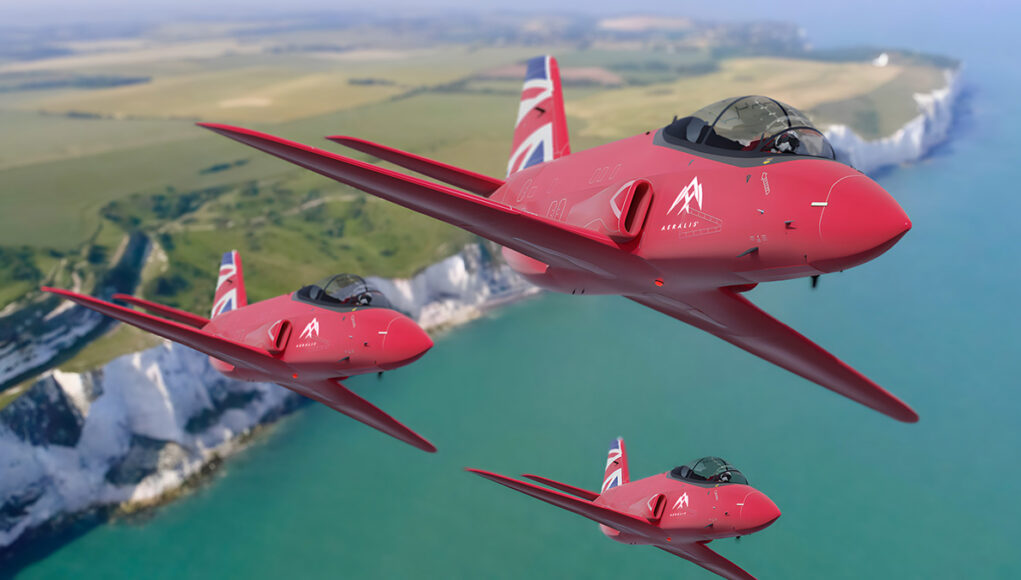


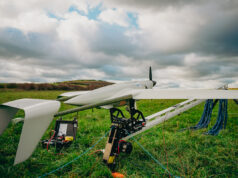
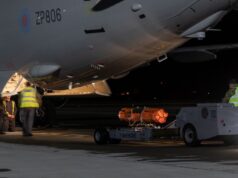
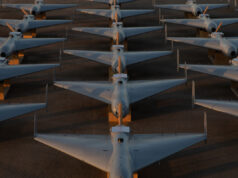
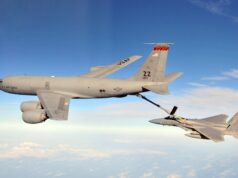
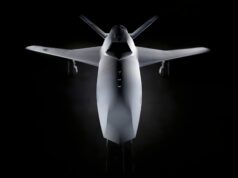


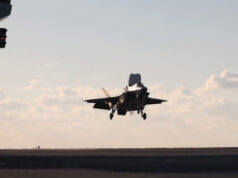

Nice article. Always good to get a longer bit of analysis now and again.
It’s very interesting, unfortunately, it needed govenment or large company ( BAE Sytems) backing a few years ago to inject serious funding intp it.
An advanced jet trainer that uses 3D printed assemblies and can be reconfigured into a light strike aircraft or UCAV by changing modules around is sounding very ‘gen6’.
It sounds like an ideal GCAP companion programme to me.
Unfortunately, our Italian partners would have a hissy fit about that!
This aircraft looks great. I am not convinced by the subscription model though. We should be financing and owning our own military aircraft.
The one thing I would say is that it is a disgrace that we are waiting until the last minute to worry about a hawk replacement. This should have been sorted out already. I mean BAE and India came up with a potential Advanced Hawk many years ago. Which would have been a perfect answer. There are operators of hawks around the world and they are all coming up for renewal but the UK has nothing to offer as a replacement! We may wait for aeralis but most of the other operators will have picked a competitor by now.
The biggest hurdle…political will. Seems a no brainer to me. The chance to replace the Hawk and potentiaaly open up a world of trade, BUT…political will?
Invest in British companies and not let them be bought up by the bloody yanks
Aeralis is 33% owned by the Qatari government…
And another 20% by Barzan holdings, a Qatari Private Equity firm.
53% Qatari.
AERALIS needs a partner who has experience in aircraft manufacturing. AERALIS has Babcock as a partner as well. Also, according to some articles, AERALIS has an MOJ with a French company SDTS. However, a test flight was meant to be this year, but I highly doubt we will see that.
“AERALIS needs a partner who has experience in aircraft manufacturing.”
I think a good plan would be to create a joint venture company between Aeralis, RR and BAE to produce a Hawk replacement for the RAF.
That would allow Aerialis to partner with experienced british companies whilst not being absorbed by them and therefore reduce the risk of becoming a forgotten acquisition.
Great potential there but presumably short termism led as always by the Treasury will lead to an overseas product on the grounds of ” better value for the taxpayer” and possibly “urgent need”. Lessons on sovereignty will be forgotten again. Bit cynical but it seems to be how the UK operates.
Leonardo are making a play for the M346 to be a common training platform for GCAP/Tempest for Italy, Japan & UK
Waste of resources in a pipe dream. Money better spent elsewhere.
RAF needs trainers now not in 10 year and that is even if this thing fly.
“ represents a chance to reignite British aerospace design and manufacturing”
British aerospace design and manufacturing doesn’t need “reigniting”….
• Britain designed and build the Typhoon.
• Britain builds parts of the F35.
• Britain is leading the design of GCAP (Tempest)
The best choice is to buy T-50 parts kits from KAI, assembled in the UK.
Aero L-39 Skyfox,
Do it if it backfires then buy from abroad…
Look at those russian wannabes. They try so hard it’s even cute.
Surely a well written contract that adequately describes what is required, plus details of “per hour” flying rates that would be paid, along with “seed payments” at certain specified time lines within the project would be a relatively low cost and risk reduced plan for MOD.
One has to assume that MOD already has an idea/ understanding of what it wants the future airframe to do, so then the only costs are in the production of the “commercial contract”, which realistically could be produced for under £5 million, which in budget terms is loose change.
What do others think ?
Compared with 1950s, it seems to take a very long time to develop a new aircraft, even a comparatively low spec trainer. The T7 RedHawk was supposed to break that pattern but has now run into production delays and rising costs.
There isn’t much choice for Hawk replacement but it is a sizeable market. The biggest operator, the USN, is looking to replace its Goshawk variant by 2027 and, surprisingly, have announced it will not need to be carrier capable.
If AERALIS can deliver a flying prototype soon, it could be a candidate, certainly for the RAF. Once successful first flight is achieved, there is a good case for public money to be invested as part of the promised defence industrial strategy.
The UK, France and Spain need to replace their jet trainer. Hawk was an export success so there is a large potential customer base and room in the market for an additional competitor. Joint UK-FR project is favourite. Jaguar was a success. UK jobs too so good fit with govt industrial strategy.
Hawk only went out of production in 2022. It could still be brought back, if we act fast. You would need to order 28 to make it worthwhile. Base it on the 2017 advanced Hawk demo with F-35 style cockpit & more agile, high alpha wing. RR would need to buy out Safran on the Adour to fix engine issues.
T-7 Redhawk has issues with Trump’s tariffs & Boeing “issues”. Hurjet has “issues” with Erdogan locking up political oponents. The curveball would be a 2 seat Gripen with EJ200 engine. Gripen could do with a EJ200 option to get around the US veto.
Successive UK governments have kicked this can down the road for far too long. Aeralis is far too late. In 1974 the Hawk flew in 1974 a as pre-production aircraft and was so good the RAF acquired 175 aircraft in record time. It replaced Gnats and some Hunters. Trouble is a World beating design was not followed up, a familar UK industrial story. Even the Yanks bought the design, a rare event excepting the Canberra and Harrier. We only need 40 aircraft max so go with the Italian model linked to GCAP or South Korean jets is the logical solution.
Looks like a toy plane more than a modern lead in jet trainer
Whatever happens if Aeralis is chosen it needs to be chosen quickly if needed to be in service by 2030. Went to a talk by Aeralis & I think a great concept but I’m not convinced that any aircraft may not require a certain amount of testing for example I think aero engines had surges when flown in a testbed which were not found by ground testing or simulation. If Aeralis is chosen it needs to be soon to allow enough time for testing & development including allowing for any issues (much delay in many aircraft programmes due to unforeseen problems)- best of luck to Aeralis if they are chosen & if successful could lead to export orders
I am going to be brutally honest, the Aeralis aerodynamic design does not bring anything new to the table. There is no advancement over the legacy Hawk or Alphajet. It is subsonic, uses a single fin, does not use leading edge root extensions or chines to generate an over the wing vortex. Additionally the fuselage shape does not add significantly to body lift. Which is critical for high alpha maneuvering and nose point-ability. A single tail fin does not take advantage of the vortex, unless additional strakes are added to redirect the airflow ala Typhoon. Which redirect the vortex from the canards.
I cannot see what is the value of Aeralis over a new build Hawk? Irrespective of the alleged ability to change the airframe to suit basic trainer to lead-in trainer. The airframe shown as a lead-in trainer, leaves a lot to be desired.
The majority of off the shelf lead-in trainers like the M346, KAI T50, and the Saab T7 Redhawk. All make use of leading edge root extensions to generate an over the wing vortex. Which helps maintain lift at high angles of attack. However only the Saab T7 makes use of twin fins. Which gives it significantly more yaw control at these high alpha angles.
The problem all these aircraft face is that they are at the most a 4th gen platform. We will soon be entering the 6th gen age. So a lesson trainer must be able to bridge the gap for student pilots, a simulator can only do so much. EADS (Airbus) are relooking at the Mako design that never came off the drawing board. As France want a training aircraft that helps lead in to the SCAF 6th gen aircraft.
Perhaps it is time for the UK to look at a more modern lead-in trainer that helps train pilots for the GCAP platform. Or get Saab to join the GCAP group, where they design their Gripen replacement to include a twin seat version, that could be used for training. If Saab included the avionics, the engine etc from GCAP, their development work would be considerably reduced, which would get the aircraft in service much quicker.
Sadly a pipe dream like all these start ups building big drone style air taxis it will just run out of funding
Actually they originally called it the Dart Jet and it was going to have an initial flight around 2016, they just keep putting that back two years at a time.
Just to let you know AERALIS Have a mock up of this trainer on display at Aerospace Bristol Museum.
George, VMT for the updates and commentary on Aeralis. It is good to read an upbeat aerospace article. My concern, and that of many others, is that of delivery (on time and to spec). The focus is on a replacement for RAFAT’s T1 Hawk; however, T2 is in focus too. The T1 is due to be withdrawn, according to Ms Eagles, by March 2030. We must assume therefore, that its successor must be ready to fly with RAFAT’s pilots in the Autumn of ’29. That’s a big ask.